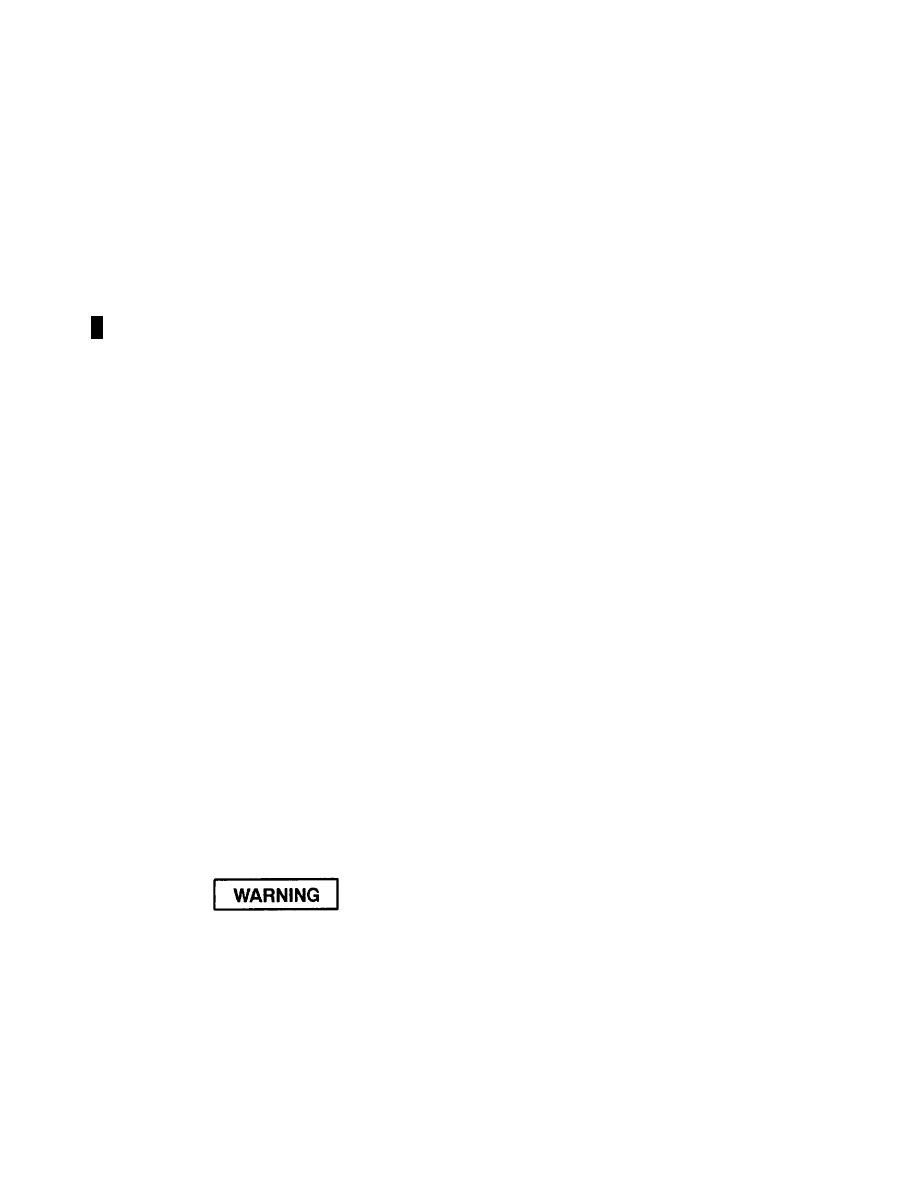
TM 55-1500-345-23
(1) After appropriate masking, apply sol-
(1) Flush the stripped surfaces, using water
vents with soft bristle brush or clean cloth.
heated to 90 to 120 Fahrenheit at 150 to 250 psi
maximum. If high pressure warm water is not avail-
(2) Allow solvent to remain on surface
able, cold water at usual hydrant pressure may be
until paint has softened and lifted. To keep the area
used. This will require a longer time to accomplish
wet with solvent, it may be necessary to keep a cloth
the washing. Lifted paint will be flushed by starting
on the surface and keep the cloth saturated with sol-
at the bottom and working upward, keeping the
vent.
flushing liquids off the unwashed parts. After flush-
ing thoroughly, continue cleaning in accordance
(3) Wipe all of the solvent away with a
with TM 1-1500-344-23.
clean damp cloth, frequently rinsing cloth in clean
water.
NOTE
(4) Repeat steps (1) through (3) as nec-
Zinc chromate primed surfaces, where
topcoat material has not been applied,
essary until all paint and residue have been
should be washed down as soon as
removed from metal surface including recesses and
possible after initial loosening of primer.
around rivets, bolts, etc.
If the surface becomes dry, another
application of remover is required since
zinc chromate tends to become rede-
(5) Wipe clean and dry with clean lint-free
posited on the surface.
cloth, Federal Specification CCC-C-46.
(2) Tape and loosened paint may be
removed by hand or by using water under pressure.
METALS. Mechanical removal of paint is recom-
mended where chemical removal would be imprac-
TIONS.
tical because of structural complexities, rinsing diffi-
culties, or where it is more efficient or environmental
a.
Removal of Paint with Solvent Materials.
restrictions on chemical exists.
When impractical to use emulsified paint remover
because of complexities of assembly and rinsing
a. Hand removal may be accomplished
difficulties, remove acrylic paint with solvent materi-
using:
als such as ethyl acetate, Federal Specification TT-
E-751, lacquer thinner, Federal Specification TT-
T-266, or dichloromethane, Military Specification
(1) An abrasive nylon mat, Military Speci-
MIL-D-6998; remove polyurethane paint by
fication MIL-A-9962; aluminum wool, Military Speci-
mechanical means.
fication MIL-A-4864, or Federal Specification
P-P-101 No. 400 abrasive paper. Do not use steel
wool.
(2) A hand operated air powered drill
Prolonged breathing of solvent fumes
must be avoided. Use only in well venti-
motor with rotary brass wire brush or abrasive flap
lated areas.
brush on heavy structural non-clad aluminum
Application of Solvents
b.


